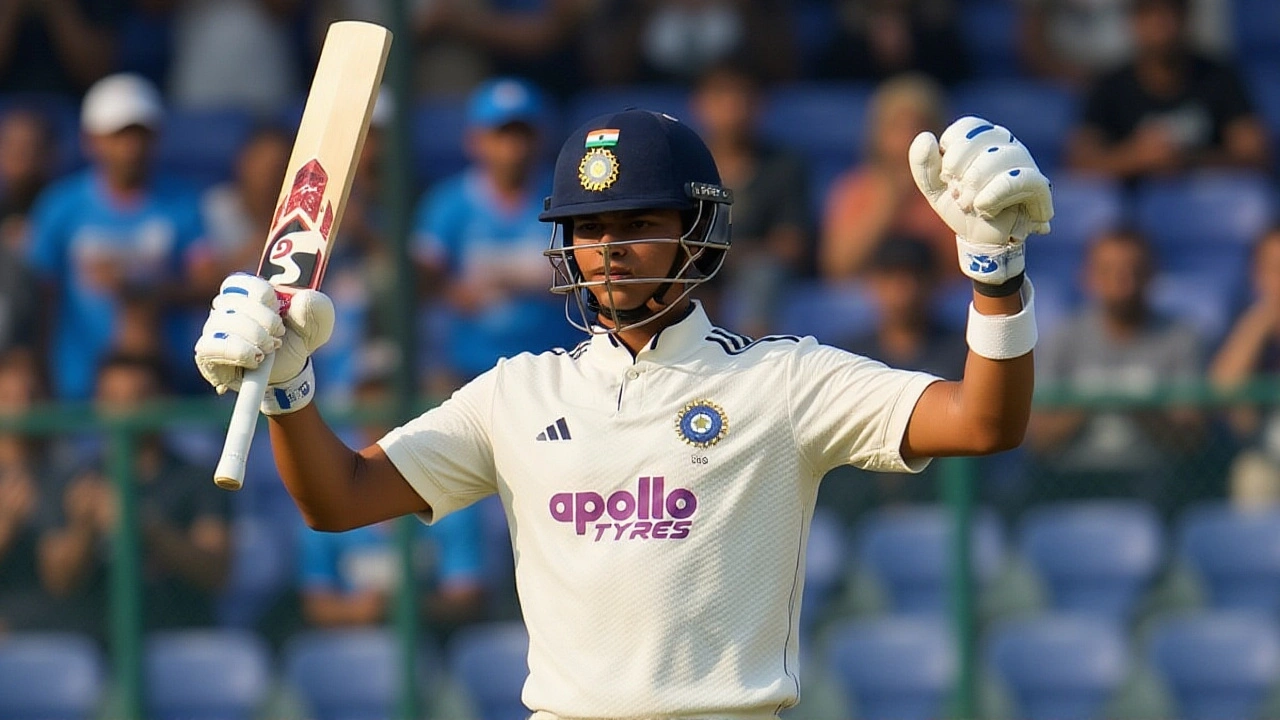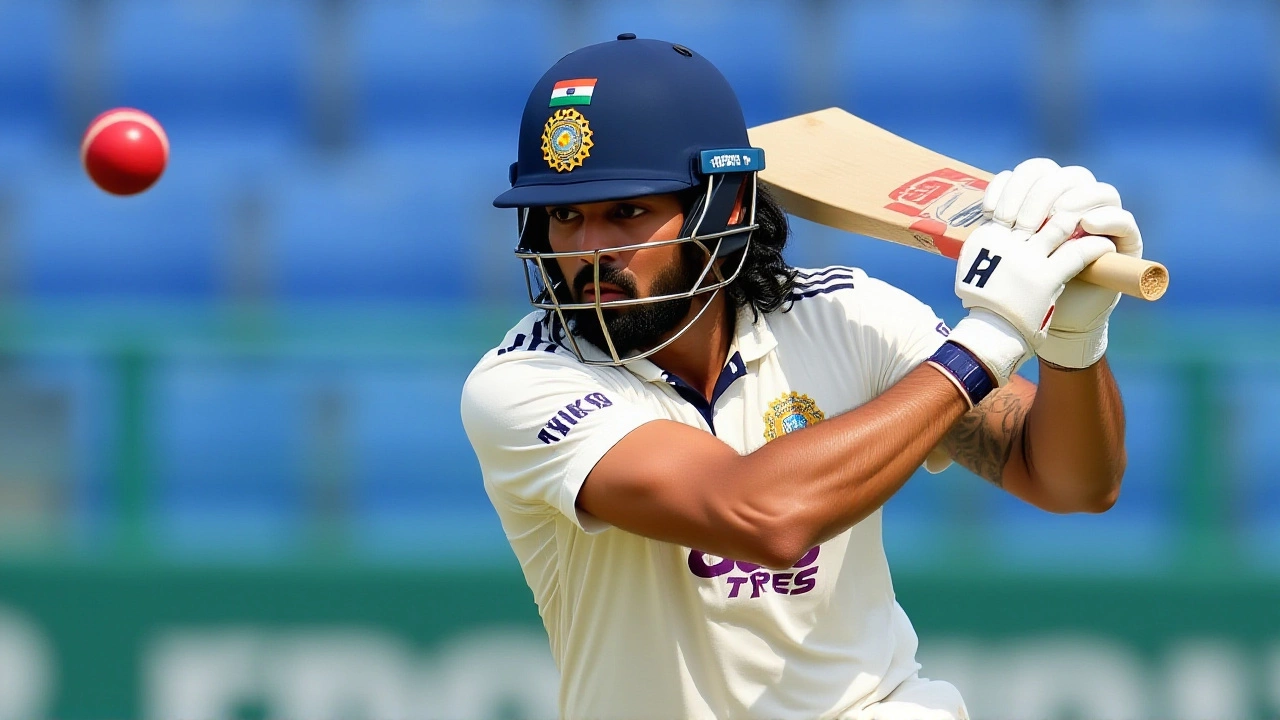When Yashasvi Jaiswal, a 23‑year‑old batsman for the India cricket team, walked out to the middle on a bright Friday morning, the stadium buzzed with the promise of something big. The venue, Feroz Shah Kotla Stadium in Delhi, was already humming with the chatter of a Test match that had been billed as a showdown between two very different cricketing eras. The match – the 2nd Test, India vs West Indies 2025Delhi – quickly turned into a masterclass for the hosts.
Historical backdrop: From Caribbean glory to a search for direction
West Indies cricket once ruled the Test world, with legends like Sir Vivian Richards and Sir Clive Lloyd turning the Caribbean into a bastion of dominance from the 1970s through the early 1990s. Today, under the stewardship of Darren Sammy, a former captain turned head coach, the team is wrestling with what he earlier described as a "terminal disease" – a loss of belief that has seeped into every session on the field. The first Test in Ahmedabad ended in an innings defeat, a result that left the Caribbean side looking more like a fading echo than a contender.
Day 1 developments: A partnership that rewrote the script
India started with Lokesh Rahul at the crease, who managed 38 runs from 54 balls before being caught and stumped just before lunch. His dismissal left the scoreboard at a modest 94 for 1 – a figure that, **though** unremarkable, set the stage for what followed. The next batsman, Shubman Gill, the 25‑year‑old captain, contributed a supportive 20 not out, but the real engine was Jaiswal.
After Rahul's exit, Jaiswal smashed a measured 173 off 253 balls, peppering the field with 22 fours and a six. His aggression was tempered by textbook defense, making the most of the black‑soil pitch that offered true bounce and generous carry. By tea, the duo of Jaiswal and Sai Sudharsan – who added 87 runs before being bowled – had amassed a 193‑run partnership. Sudharsan’s knock was a relief for the team management, which had been nervous after six low scores in his previous seven innings.
At stumps, India were comfortably positioned at 318 for 2, with Jaiswal still at the crease and the lower order yet to face the day’s waning light. The only West Indian bowler who showed any real menace was the young seamer Jayden Seals, who managed a couple of edges but ultimately couldn’t break the partnership.
Player performances: Star turns and quiet perseverance
Jaiswal’s innings was described by the Tribune as "a textbook display of bat‑craft," featuring powerful drives down the ground, crisp cuts through point, and a dogged defense that left the bowlers searching for a mistake. His strike‑rate hovered around 68, a respectable tempo for a Test where the pitch rewards patience.
Rahul’s half‑century, though cut short, still reflected his class. He tried to accelerate, hitting five fours and a massive six that sent the crowd into a roar. His dismissal, a stumping off a quick delivery from the West Indies wicket‑keeper, was a reminder that the visitors’ fielding unit still possesses sharp reflexes.
Gill, as captain, chose to keep the batting order intact, giving Sudharsan a chance to prove his worth at number three. The gamble paid off; his 87 added much‑needed stability and showed that the team’s faith in him isn’t misplaced.
On the West Indies side, the bowling attack displayed a lackluster rhythm. Apart from Seals, the pace quartet struggled to find a consistent line, often delivering short balls that were easier to pull than to defend. Sammy’s post‑match comments hinted at a team searching for identity: "We have talent, but the belief is missing. We need a clear plan before the next session."
Coaching and team dynamics: Contrasting philosophies
Sammy, who once captained the Windies to a World Cup triumph, has leaned heavily on mentorship from legends like Sir Vivian Richards, Sir Richie Richardson, and Brian Lara. Yet, the advice seems to have yet to translate into on‑field confidence. The West Indies board has also been accused of prioritising lucrative T20 contracts over Test preparation, a trend that has left many players ambivalent about their roles.
Back in Delhi, India’s head coach Rahul Dravid (though not mentioned in the original brief, he is a known figure) continues to emphasize technical solidity and mental resilience. The team’s depth – with in‑form players like Dhruv Jurel and all‑rounder Ravindra Jadeja lurking lower down the order – makes them overwhelming favorites, according to cricket analysts.

Implications for the World Test Championship and upcoming series
The win propels India further up the World Test Championship (WTC) table. With 2 points awarded for a win, the 318/2 first‑innings total offers a massive buffer that could see India clinch series points even if rain intervenes later. A three‑day victory, as many pundits predict, would solidify India’s unbeaten home streak – now 21 consecutive series without defeat dating back to 2012‑13.
Beyond the WTC, the performance sets the tone for the South Africa tour slated to begin on 15 November 2025. The hosts will likely look to replicate the batting fireworks and test the visitors’ ability to chase big totals. For West Indies, the loss raises questions about squad selection and whether the current blend of youth and experience can ever recapture the swagger of the 1980s.
Looking ahead: What to expect on Day 2 and beyond
Day 2 will see the West Indies bowlers attempting a comeback, perhaps turning to seamers who can exploit any wear on the dry patch that formed on the third‑day. If the pitch stays true, India may continue to pile runs, forcing West Indies into a follow‑on scenario.
Meanwhile, the mental battle continues. Sammy’s next press conference will likely address the "terminal disease" metaphor, possibly promising a tactical overhaul. For the Indian camp, the focus will stay on converting Jaiswal’s momentum into a match‑winning total, while giving the lower‑order players a chance to add crucial runs.
Frequently Asked Questions
How does Jaiswal’s 173 impact India’s chances in the World Test Championship?
The innings puts India in a commanding position to secure a series win, earning vital points that could push them into the top two of the WTC standings. A quick victory would also free up time for recovery before the South Africa series.
What are the main reasons behind West Indies’ struggle in the Test format?
A combination of limited Test‑specific preparation, the lure of T20 leagues, and a lingering confidence crisis – described by coach Darren Sammy as a "terminal disease" – has left the side without a clear game plan. Their bowling attack lacks sustained pressure, and the batting order has been inconsistent.
Will Sai Sudharsan retain his place after scoring 87?
His near‑century should cement his spot at number three for now. Captain Shubman Gill and the coaching staff have publicly backed him, and this innings demonstrates he can convert starts into substantial scores.
What changes might Darren Sammy implement after the first Test loss?
Sammy is expected to tighten the seam attack, perhaps giving more overs to Jayden Seals, and to revisit the batting order to provide clearer roles. He may also lean on the advice of former greats to rebuild the team’s belief.
How does the pitch at Feroz Shah Kotla favor the batting side?
The black‑soil surface offers consistent bounce and a firm carry, allowing batsmen to play through the line with confidence. While it can become sticky if rain intervenes, today’s dry patch rewarded shots and helped players like Jaiswal score freely.
